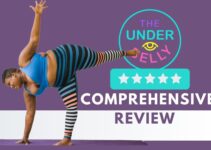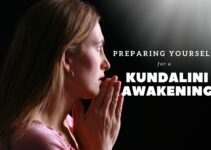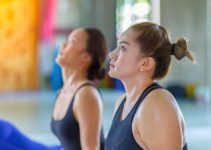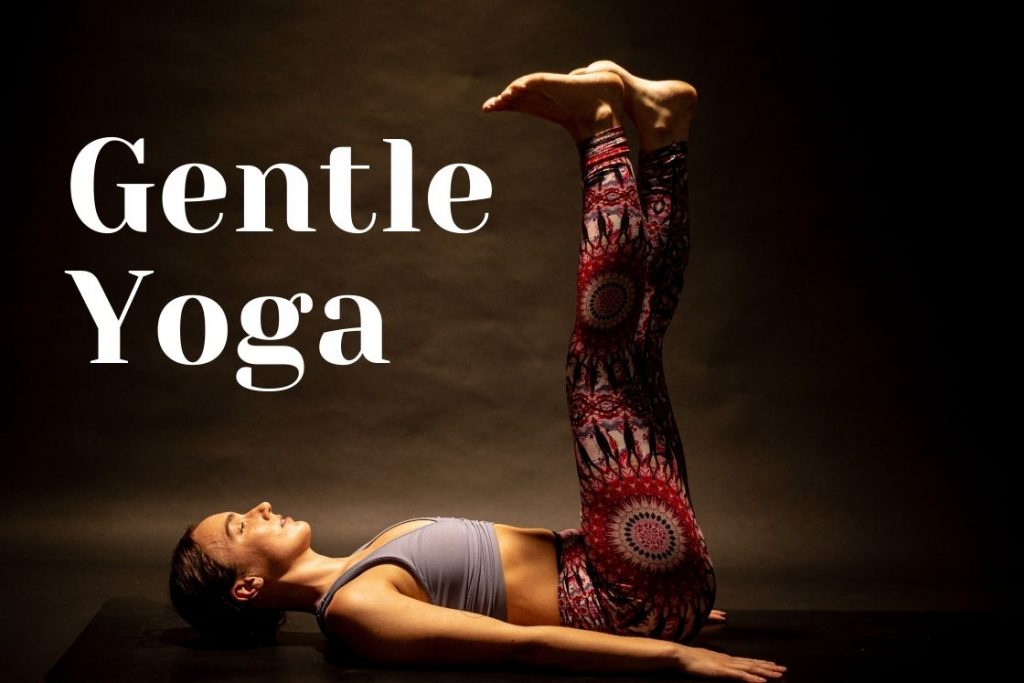
Lowered stress, greater strength, flexibility, balance, weight reduction, improved sleep, and mindfulness are just a few of the many health and wellness benefits of regularly practising yoga. The list is lengthy and expanding, and the benefits of yoga are many.
To achieve these numerous benefits of yoga, there are many types and styles of yoga one can choose from. Gentle yoga is one such type that covers yoga styles which places a strong emphasis on movement, alignment, and breathing. It has a comfortable pace that allows you to discover what feels right and listen to your body.
Gentle yoga is excellent practice for people who are new to yoga, as well as for those who wish to maintain a healthy and well-balanced yoga practice in a fast-paced environment.
What is Gentle Yoga?
Gentle yoga is exactly what it sounds like: a yoga practice that is more gentle and smooth in nature. It is common for gentle yoga to be meant to be softer, less intensive, non-strengthening, minimalistic, peaceful, contemplative, and somewhat restorative in nature.
A slower tempo and less strenuous postures are used in this practice, which often involves long periods of meditation, yogic breathwork, and relaxation as part of the routine.
A gentle yoga session often involves additional warm-up exercises at the beginning of class. The yoga postures are maintained for longer periods of time in a soft setting. Gentle Yoga provides a greater focus on stretching, sitting postures, and low-impact exercises than other types of yoga practice do.
For whom is gentle yoga apt?
Gentle yoga is designed especially for individuals who are new to yoga or who want a more gentle approach to their practice. It is mostly recommended for seniors and, with modification, for individuals suffering from a particular physical condition. However, almost anybody, regardless of age or physical condition, may benefit from gentle yoga performed regularly.
The gentle yoga type is particularly beneficial for individuals who are dealing with injuries, discomfort, limited mobility, or other health problems.
An easy-to-follow gentle yoga sequence is a wonderful option for anybody who is concerned about whether or not they are flexible or fit enough to do the postures properly.
How to get started with Gentle Yoga?
Gentle Yoga includes body postures that need to be held for a little longer than usual. Hence, you need to open up your body before jumping into any pose. Thus, a good warmup can be a good start for a smooth session of practising such a form of yoga.
Gentle yoga has different styles such as Yin Yoga and Restorative Yoga. In case you are not sure where to begin you can give a kick start with yin yoga. The reason behind this is that yin yoga is comparatively a slow-paced form. As and when your body opens up and there is better flexibility you can move to other styles such as restorative yoga where postures need to be held for a longer time.
Benefits of Gentle Yoga
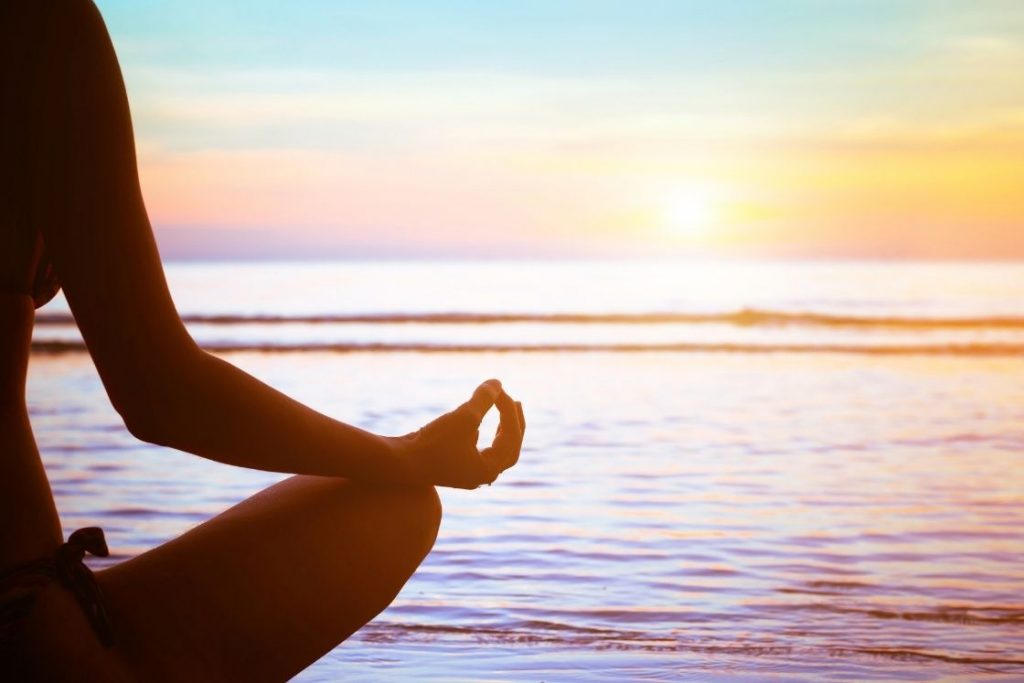
Gentle activities may frequently reap benefits such as physiological, emotional, and spiritual renewal without the need for physical exertion or tears to be shed beforehand.
- Gentle Yoga might be beneficial to your body in a number of different ways. The focus on breathing and quiet contemplation in gentle yoga enables us to leave feeling comfortable in our minds, peaceful in our central nervous system, and supple in our bodies.
- Practicing gentle yoga helps to lubricate joints, relax tense muscles, warm the ligaments and tendons, and strengthen neurological impulses.
- When practising yoga in a softer manner, the nervous system is calmed, allowing the parasympathetic nervous system to be activated.
- It increases lung capacity while also strengthening the muscles that control breathing.
- A reduction in stress levels and an increased capacity to relax and recover are all encouraged as a result of this.
- It helps in reversing heart disease, gentle yoga may assist those suffering from chronic fatigue syndrome, fibromyalgia, mental problems, and other difficult illnesses.
- Individuals who have difficulty falling asleep at night, who are continuously going over their to-do lists, or whose bodies feel tense and restless can benefit from this technique.
- It is also likely that your responsiveness to your emotions and ideas will grow.
Gentle Yoga styles
There are various types of Gentle Yoga sessions that you may participate in and learn more about. Each will move at a different speed and with a different type of movement.
The disappointment of not being able to accomplish a certain posture, as well as the agitation of trying to maintain a stance, is absent with gentle yoga practice.
The two most famous styles of gentle yoga are yin and restorative yoga.
1. Yin Yoga
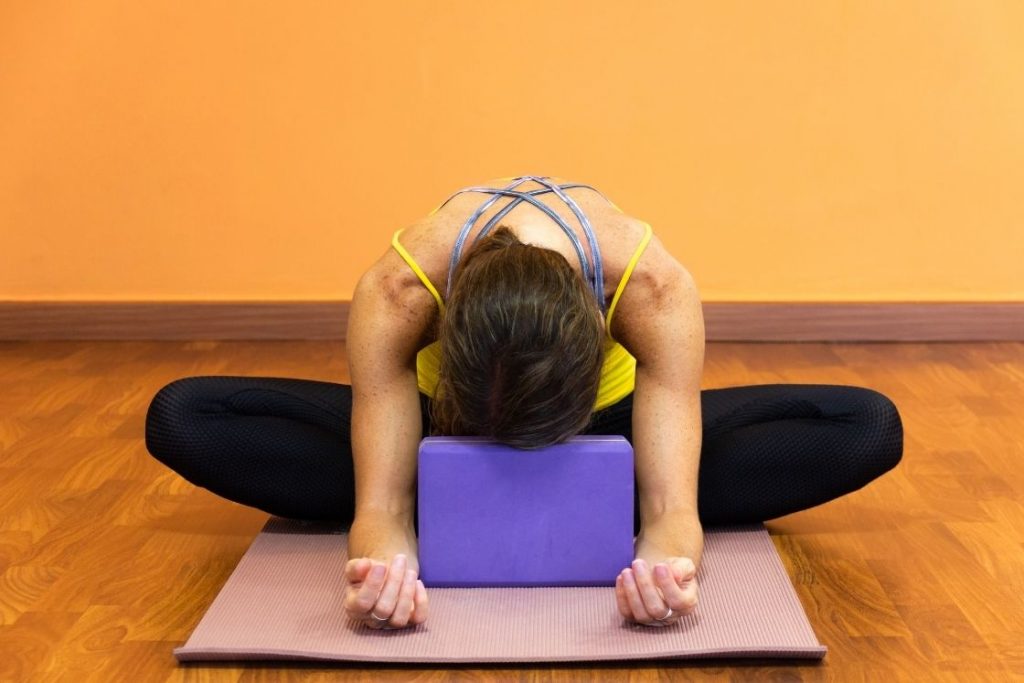
Yin yoga is a more contemplative form of yoga that may assist you in achieving a more spiritual state of mind. Contrary to popular belief, yin yoga is not an “easy” kind of exercise but still, it’s considered a gentle yoga style.
In yin yoga style, you hold postures (mainly on the floor) for 3-5 minutes at a time in order to reach deep layers of muscle and attain profound physical release. While targeting connective tissues and the subtle routes known as “meridians”, the lengthy, deep holds of Yin Yoga develop perseverance and serenity in the practitioner.
The aim of a yin yoga practise is to get access to the joints, bones and connective tissues, via gentle movement. This aids in the restoration of healing, mobility, and suppleness in the joints and fascia that we lose as we age or as a result of an accident or illness. It facilitates the movement of energy throughout the body, and it has particular advantages for the health of the organs.
Yoga postures that expand the hips such as frog pose, half-pigeon are excellent examples of yin poses since they intensify after holding a few minutes.
The 80% rule is an essential idea in Yin Yoga, and it is used in conjunction with the long-held poses.
To properly stretch the deeper yin tissues, we must not exceed 80% of our maximum capacity in the posture, according to this rule of thumb. Because if we go too far into the pose, the pressure will shift to the yang muscles (the fascia under the skin, muscles, etc.), or we may put too much tension on the yin tissues, we will risk injuring ourselves and causing an injury to ourselves. As a result, the use of props such as chairs, blocks, bolsters, and blankets is strongly recommended in yin yoga sessions, particularly in the seated position.
“Since the emotional and energetic layers of the body are the main focus, [yin] practitioners experience a dramatic reduction of emotional imbalances, such as less anxiety, stress, frustration, and depression.”
— Lindsay Pirozzi, NYC-based yoga instructor
Yin yoga is particularly beneficial for yogis who regularly practise more athletic forms of yoga, such as power yoga. Incorporate one yin yoga session or a few yin yoga postures into your weekly routine, and you’ll likely notice a difference in how you feel in your physique.
2. Restorative Yoga
Restorative yoga requires you to maintain postures for up to 10 minutes (or longer) while being supported by props, allowing your body to completely relax.
Instead of stretching, the aim of restorative yoga is to allow your muscles, nervous system, and mind to really let go and dissolve into relaxation via the use of supportive cushions. This implies that there is relatively little physical effort required during a practice session.
Restorative yoga makes extensive use of props, such as blankets, eye pillows and bolsters, to assist you in reaching this level of relaxation. Restorative yoga practitioners often use props to support themselves in the Supine bound angle position. It is possible for your body and nervous system to totally rest after you have achieved the sensation of being completely comforted. Its aim is to help people find serenity and peace by putting them in therapeutic and soothing positions.
Gentle Yoga vs. Traditional Yoga Styles
Gentle yoga, which includes forms such as yin yoga and restorative yoga, focuses on total body relaxation. Gentle yoga techniques aid in the cleansing and liberation of the mind. Let us have a look at the many yoga types that may be practised in addition to gentle yoga.
As compared to Gentle Yoga, which is slow-paced, Vinyasa yoga comprise fast-paced yoga flows performed in synchronization with breathing. It has more athletic postures and the poses aren’t held for more than a few seconds. Vinyasa means “to position in a particular manner,” which refers to yoga poses in this instance.
Hatha Yoga is more or less like a gentle yoga session. If we add slow-paced flow in hatha yoga, it becomes gentle hatha-style yoga. Unlike gentle yoga which has slow-paced flowing yoga sequences to warm up the body in the beginning of a session, hatha yoga generally refers to a style which has no-flow at all. Hatha yoga is meant to perform with some effort to hold the pose focusing less on alignment rather posture.
One thing that separates Gentle Yoga from Iyengar Yoga is that Iyengar Yoga use props (chairs, blocks, benches, etc.) for carrying out different postures. B.K.S. Iyengar developed Iyengar yoga, which emphasises alignment as well as thorough and exact movements. Students in an Iyengar class practise a range of postures while regulating their breath.
What can you anticipate from a Gentle Yoga session?
An effective, compassionate, non-competitive, safe, atmosphere is created in a gentle yoga session that is open to all participants, regardless of experience level.
Gentle yoga courses may take various shapes and forms, but in its most basic form, gentle yoga sessions use fundamental yoga postures in a gradual, low-impact manner. It’s possible that you’ll find yourself moving from position to pose. Alternatively, you may find yourself holding a single position for an extended period of time. You will undoubtedly be stretching, breathing, and feeling refreshed as you walk out the door after this session.
Final thoughts
With so much strain in today’s world, it is imperative that we rediscover our centre and re-establish a connection with our strength and our liberty. Life’s freedom is the freedom to respond to it with knowledge rather than reacting impulsively to everything it throws at us.
The practice of gentle yoga is not a particular style of yoga, like Power Yoga, Ashtanga Yoga, or Bikram Yoga. But gentle yoga is umbrella term for all those yoga styles which has slow pace and long holding asanas, focuses more on body and mind relaxation.
Frequently Asked Questions
Gentle yoga is a kind of yoga that falls halfway between a flowing session and a class that is mainly seated or with lengthy holds. Whatever be the student’s physical condition, how old or young, it provides care, love, and compassion for their bodies.
When practising standing postures, combine them together as much as possible. Another thing to avoid while practising gentle yoga is squeezing in too many postures into a single session time. The number of postures you may teach should be limited to five or six.
Gentle Yoga, with its historically rooted soothing practises, is a breath of fresh air in today’s world, when Yoga is increasingly taking on athletic characteristics and integrating rigorous exercises.
Gentle yoga can be safely practiced during pregnancy as it doesn’t put too much strain on your joints. A pregnant woman can try restorative yoga, gentle prenatal yin yoga with the supervision of an experienced yoga instructor.
